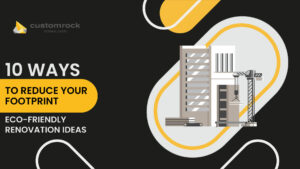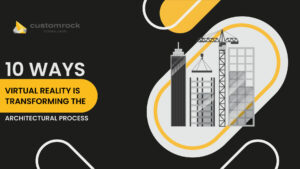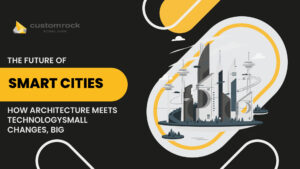TL: DR
Contemporary architecture uses formliners to add texture, pattern, and aesthetics to buildings and spaces. They enhance facades, exterior walls, and create art installations. They also contribute to sustainable architecture and are crucial aspect in construction projects today.
In the future, formliners technology will bring exciting advancements in contemporary architecture. These formliners will be crafted from biodegradable materials and will pave the way for sustainable architectural solutions. Moreover, nanotechnology will play a pivotal role by introducing self-cleaning surfaces, which will further reduce maintenance efforts.
Additive manufacturing will help streamline the construction process and promote intricate designs. Collaborative design platforms will foster teamwork among architects and designers which will encourage efficient project development.
Formliners have a big impact on architecture as they help create aesthetic and sustainable designs.
Today, formliners have changed a lot in architecture due to technology. Architects can now create unique textures, patterns, and art on buildings using formliners. They also help with sustainable architecture by providing shading and natural ventilation.
Digital technologies, like computer-aided design (CAD) and 3D printing, have opened up possibilities for exquisite designs with formliners.
Innovations in Formliners Technology
In construction and architecture, appearance and efficiency are important for making captivating and practical buildings. Formliners are essential for adding textures and patterns to concrete surfaces; ultimately, making them look better.
As time passed, formliners technology improved significantly, which allowed designers and engineers to be creative and sustainable in their projects than ever before.
1. Sustainable Materials
To meet the requirement for eco-friendly construction, manufacturers now make formliners with recycled materials.
This helps the environment as it reduces construction’s negative impact and follows the idea of a circular economy (where waste becomes useful again).
With sustainable formliners, architects and builders can create beautiful concrete finishes and also contribute to a greener and sustainable future.
2. 3D Printing for Enhanced Customization
3D printing has changed numerous industries, including construction. In formliners, it has brought exciting new options for customization. Architects and designers can now make complex and special designs that were impossible to make before.
This level of customization allows them to turn simple concrete surfaces into amazing works of art and bring their ideas to life.
3. Digital Design and Simulation
Digital design tools and simulation software have improved the formliners design process. Architects and engineers can now try out various patterns and textures virtually before making a choice.
This saves time and resources and ensures the formliner fits perfectly with the project’s vision. Therefore, it is a go-to option for many architects since it saves them time and meets client expectations.
4. Lightweight and Flexible Formliners
Using traditional formliners made from rigid materials can be tough and limit design options. But now, there are lightweight and flexible formliners due to recent innovations.
These materials are easier to work with that allow complex designs without sacrificing structural integrity. Additionally, they save on shipping costs and energy during installation, making them ideal for sustainable construction practices.
Applications of Formliners in Contemporary Architecture
Formliners are crucial in modern architecture since they add texture, patterns, and design to ordinary concrete surfaces. They are versatile and offer creative possibilities which lead to their widespread use in construction projects.
Here are some notable applications of formliners in contemporary architecture:
Facades and Exterior Walls:
Formliners are widely used to make building facades and exterior walls appear better. They add special textures and patterns to plain concrete surfaces which make them visually attractive and unique.
Architects can create various effects, like mimicking natural stone or using abstract geometric patterns. They give each building its own character and make it stand out from the rest.

Bridges and Infrastructure:
Formliners are used in building bridges and other infrastructure to make them fit well with the surroundings. By adding natural textures like rock, wood, or foliage, bridges can blend in with the landscape. It helps them be less visually intrusive and more pleasing to look for people walking or driving by.

Public Art Installations:
In modern architecture, formliners are used for artistic expression. They appear in public art installations like sculptures and decorative walls and show designs that tell special stories. The ability to make detailed and personalized patterns allows artists and designers to be creative and leave a long-lasting positive impact.
Urban Landscaping:
Formliners are also vital in urban landscaping projects. They are used to make public spaces like parks, plazas, and pedestrian pathways more interesting and appealing. By adding different textures and designs to concrete surfaces in these areas, formliners help create welcoming, attractive, and lively urban environments.
Interior Spaces:
Formliners are not only for the outside; they are also used inside buildings. Formliners allow designers make impressive and personalized interior designs. They match the overall interior style and make the space feel more inviting and aesthetically pleasing.
Environmental Design and Sustainable Architecture:
Using formliners that imitate natural materials in green building projects is essential for promoting sustainable architecture. When architects use formliners that can imitate natural materials such as wood, bamboo, or stone, they can construct eco-friendly buildings.
As a result, it lessens the demand for resource-heavy materials while maintaining a natural and environmentally-friendly appearance.
Landscape Architecture:
Formliners are crucial in landscape architecture projects. Designers use them to make retaining walls, seating areas, and other hardscape features. Custom formliners help architects blend the built environment with the natural landscape that helps create a seamless and visually attractive integration.
Future Trends and Speculations
As construction and architecture progresses, formliners are expected to see more improvements and exciting trends in the future. Here are some potential developments in formliners technology:
1. Smart and Interactive Formliners:
In the future, we may have smart formliners with embedded technology. These could have sensors and actuators to react to the environment.
For example, they might change their texture or look based on temperature, humidity, or lighting. This innovation will create dynamic and interactive facade in contemporary architecture.
2. Biodegradable and Living Formliners:
As people focus more on sustainability and nature-inspired design, we might see a change to biodegradable formliners.
These liners could be made from organic or bio-based materials. Also, biotechnology progress may bring living formliners with living moss or vegetation. This will bring architecture closer to nature and promote biophilic design.
3. Nanotechnology and Self-Cleaning Surfaces:
Nanotechnology could bring self-cleaning properties that repel dirt and pollutants. With this feature, surfaces will stay clean for longer, reducing maintenance work. This will also help architectural structures last longer.
4. Augmented Reality (AR) Formliners Design:
Augmented Reality (AR) will bring a big change to formliner design. Architects and designers might use AR tools to see and adjust formliner patterns and textures directly on concrete surfaces in real-time.
This will provide an immersive and efficient way to explore and finalize designs before construction process begins. It could be a revolutionary approach that can greatly enhance the design process.
5. Adaptive Formliners for Climate Resilience:
In the future, formliners that can adapt to weather changes could become essential. These liners might be created to respond to extreme temperatures, heavy rain, or wind.
They will offer both functional and aesthetic advantages while also ensuring buildings remain safe. This trend will play a significant role in creating more weather-resistant and sustainable structures.
6. Additive Manufacturing (3D Printing) of Formliners:
3D printing may also become popular for formliners. It will allow architects to make intricate and complex designs that were difficult before. Also, it could be more sustainable as it will reduce material waste. This advancement will bring exciting possibilities for creating unique and environmentally friendly formliners
7. Collaborative Design Platforms:
Collaborative design platforms are likely to emerge in the near future. This will bring architects, engineers, and artists together to make customized formliners. This collaboration will bring up creativity and result in innovative and unique formliner designs.
These platforms will be a center for creativity and will promote groundbreaking ideas for the future of architecture and design.
8. Mixed Reality Experiences:
In the future, formliners could create mixed reality experiences by blending physical and digital environments. By adding augmented and virtual reality elements to formliner patterns, buildings will become interactive canvases for art and storytelling. This will offer captivating experiences that will change how people interact with architecture and spaces.







